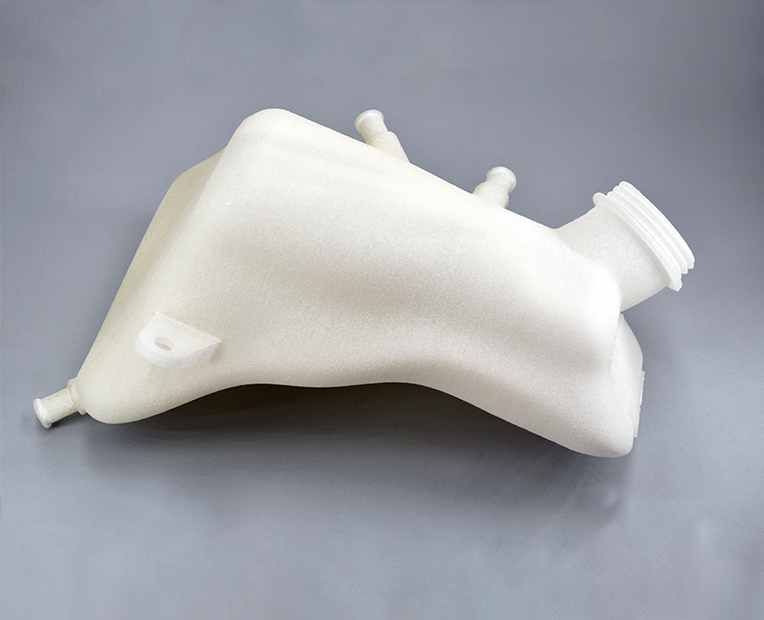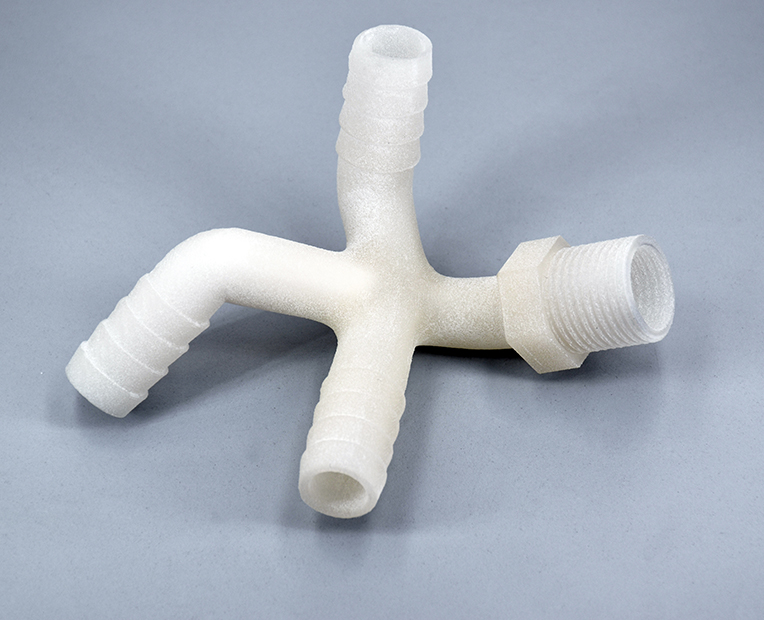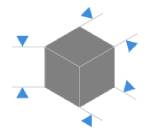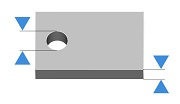Home » Los Materiales de Impresión 3D » Tecnología SLS para Impresión 3D » Ultrasint® PP nat 01
Ultrasint PP nat 01
Ultrasint® PP nat 01 es un material en polvo es popular para una amplia gama de aplicaciones innovadoras.
Colores
Caracteristicas
Guia de material Ultrasint PP nat 01
Que es PP?
El polipropileno o PP es una poliolefina termoplástica semicristalina. Este avanzado material en polvo es popular para una amplia gama de aplicaciones innovadoras. De hecho, el polipropileno es parte de los plásticos estándar y es el polímero más usado, mucho más usado que el PA12. ¡Ahora es posible usarlo para la fabricación aditiva!
La impresión 3D PP ofrece la posibilidad de aprovechar al máximo todas las características conocidas de este plástico: excelente resistencia química, estanqueidad de los medios y ductilidad. La rigidez de este material plástico PP lo hace muy adecuado para aplicaciones técnicas y piezas impresas en 3D duraderas.
Este material PP nat 01 está impreso en 3D con tecnología de sinterización selectiva por láser. Tenga en cuenta que deberá respetar las pautas de diseño específicas para evitar cualquier problema durante el proceso de fabricación aditiva. Asegúrese de consultar las pautas de diseño del material al crear su archivo 3D y antes de enviarlo para impresión 3D.
¿Cuáles son las posibles aplicaciones para este material?
Estás viendo para un material de impresión 3D que ofrece resistencia, ductilidad y rigidez para fabricar sus piezas de uso final? Nuestro material de impresión 3D PP impreso con tecnología SLS tiene un perfil mecánico que permite nuevas aplicaciones, especialmente para la industria automotriz y el mercado de bienes de consumo. Por ejemplo, este polipropileno se puede usar para imprimir en 3D interiores de automóviles, piezas de tablero, flujo de aire o sistemas de fluidos para el sector automotriz. El material de impresión 3D PP es perfecto para usos industriales, desde tuberías hasta maquinaria.
La fórmula de este PP nat 1, en contraste con las poliamidas comunes, tiene una excelente plasticidad, un mayor alargamiento y baja absorción de humedad. Los tubos, herramientas, plantillas y accesorios se pueden imprimir fácilmente en 3D con este material PP.
¡El PP puede convertirse en una alternativa al Nylon PA12 si desea un material resistente, perfectamente adecuado para la producción!
- Chemical Resistant

Gracias a su impresionante resistencia química, es posible usarlo para crear depósitos para casi todo tipo de medios y productos químicos, o envases resistentes a solventes.
- Fuerte y ligero
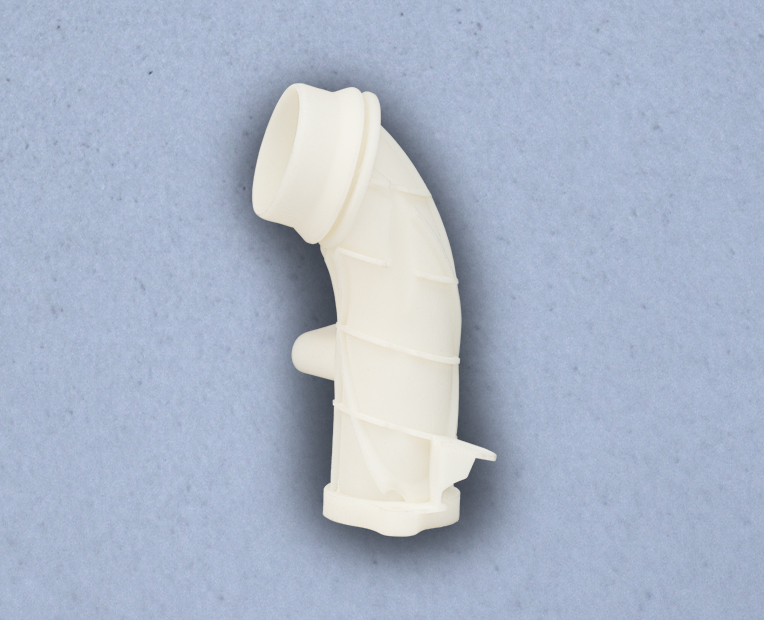
Densidad: 0.890
La fabricación fuerte y liviana es importante para varios sectores, como el automotor y los bienes de consumo.
- Hermético al aire y agua

El material de polipropileno es perfecto para crear depósitos de fluidos. El uso de la fabricación aditiva para crear depósitos o embalajes le permitirá producir piezas con formas complejas, perfectamente adaptadas a todo el diseño de sus dispositivos.
Tiempo de proceso y precio
El precio de impresión de su diseño se calcula automáticamente en el momento en que se carga. A medida que modifica su objeto (cambio de material, acabado, tamaño, uso de control de lotes o función de vaciado, etc.) notará que el precio cambia automáticamente. El precio se basa en una serie de factores, incluido el volumen total, el tamaño del objeto y el cuadro delimitador, por nombrar algunos.
El tiempo estimado de envío también se calcula automáticamente a medida que se carga el objeto y cada vez que realiza una modificación en él. El tiempo de entrega debe agregarse al tiempo de procesamiento.
Para obtener más información, consulte nuestra página de precios.
¿Cómo funciona la tecnología de impresión 3D SLS?
La tecnología de sinterización selectiva por láser utiliza un láser altamente específico que sinteriza capas finas de polvo juntas capa por capa. Después de cada ronda de láser, la cama de impresión se baja y otra capa de polvo se extiende uniformemente por la parte superior para otra ronda de sinterización. Este proceso se repite a una altura de capa de 100-150 µm hasta que se completa el objeto. Después de que la impresora se enfríe, el bloque de polvo sinterizado se elimina de la impresora 3D y los objetos impresos se eliminan a mano. Una parte del polvo que no se sinterizado se recicla nuevamente en la impresora para una impresión futura.
Luego se cepilla el objeto, que elimina una gran parte del polvo, y se limpia con chorro de arena, lo que elimina el polvo fino que el cepillo puede haber perdido.
Tamaño máximo | 260 x 260 x 300 mm |
El tamaño máximo de sus modelos está limitado por el tamaño físico de nuestras impresoras 3D: no se puede imprimir nada más grande que la cama de la impresora. |
| Espesor de capa | 120µm |
| Precisión | ± 0.3% (mínimo de ± 0.3 mm) |

| Espesor mínimo de pared (flexible) | 1mm |

| Espesor mínimo de pared con soporte | 1mm |
| Espesor mínimo de pared sin soporte | 1.2mm |

Detalles mínimos de altura y anchura | Grabado en relieve: 0.7 mm
|
| Relación Profundidad / ancho | 1/1
|
La precisión mínima de un detalle está determinada principalmente por la resolución de nuestras impresoras 3D. Sin embargo, durante el proceso de limpieza, también se puede perder una fina capa de detalles. Para que un detalle y un texto sean visibles, recomendamos seguir al menos nuestros tamaños recomendados.
Es posible que no se vean grabados y estampados particularmente finos, ya que la talla podría llenarse con un exceso de polvo que luego no se puede limpiar. Si un grabado en relieve o grabado es una parte esencial de su diseño, recomendamos hacerlo lo más profundo posible. Para garantizar una mejor eliminación del polvo (por lo tanto, una mejor visibilidad de los detalles), el ancho de sus detalles debe ser al menos tan grande como la profundidad.
| ¿Partes cerradas? | Si |
| ¿Partes entrelazadas? | Si |

Nuestro material tiene la capacidad de imprimir los diseños más complejos de nuestros materiales. Un ejemplo de diseño complejo es un volumen encerrado dentro de otro volumen, como una cadena o una conexión de rótula. Nuestras impresoras tienen la capacidad de imprimir una cadena completamente entrelazada, sin estructuras de soporte para eliminar.
| Distancia mínima entre paredes fijas | 0.5 mm |
| Separación mínima entre partes | 0.5 mm |

Para una impresión 3D exitosa se requiere un espacio libre mínimo entre los objetos para permitir que el material sobrante se expulse con arena. Si este espacio no se deja dentro del diseño, el objeto será sólido. Esto es particularmente importante para los objetos articulados, ya que el espacio que queda entre las paredes definirá la capacidad del objeto para moverse.
No se olvide
El espacio libre debe ser de al menos 0,5 mm, sin embargo, ese es el mínimo para objetos pequeños. Los objetos más grandes requieren más espacio entre sus partes. Nuestras camas de impresora se calientan durante el proceso, y los objetos más grandes se calientan por períodos más largos. Un espacio pequeño entre objetos grandes corre el riesgo de derretirse, ya que permanece bajo calor durante un largo período de tiempo. En algunos otros casos, se deben agregar agujeros para permitirnos drenar el exceso de material en polvo dentro del espacio libre.
| Hollowing ? | Yes: 5mm |

Nuestra herramienta de optimización de huecos en línea tiene la capacidad de reducir considerablemente el precio y el peso de una impresión al reducir la cantidad de material utilizado.
El uso de la herramienta requiere agregar dos agujeros a su modelo, lo que servirá como drenaje para el exceso de material en polvo dentro del objeto. El tamaño mínimo de estos agujeros está determinado por nuestro sitio web. De lo contrario, es posible vaciar su objeto manualmente en su software de modelado 3D.
¿Listo para imprimir en 3D con PP?
Con el servicio de impresión 3D en línea de Sculpteo, está a solo unos clics de la impresión 3D profesional de PP nat 01. Su modelo 3D se imprime con la maxima calidad y se entrega directamente a su puerta.
¡Empieza ahora!
Get started now!


 Conéctate con Google
Conéctate con Google Conéctate con Facebook
Conéctate con Facebook